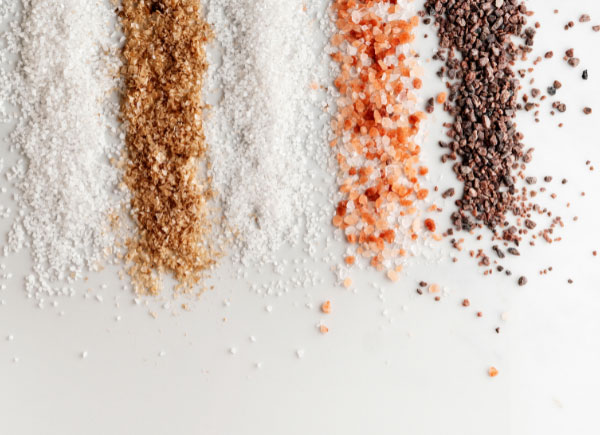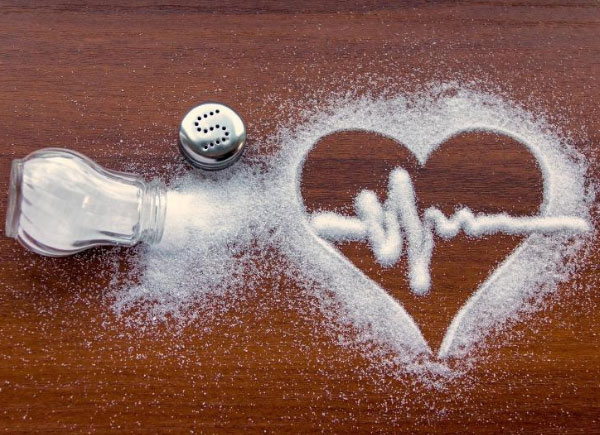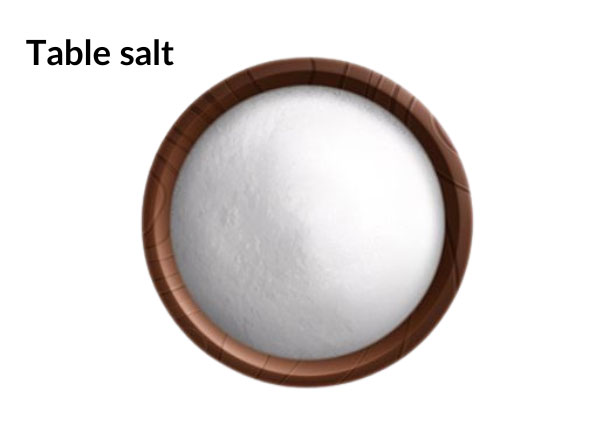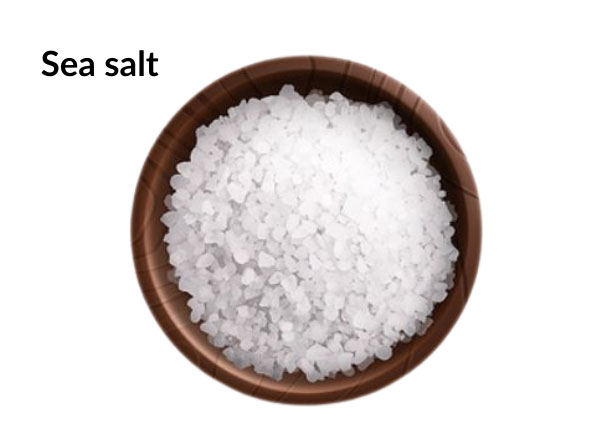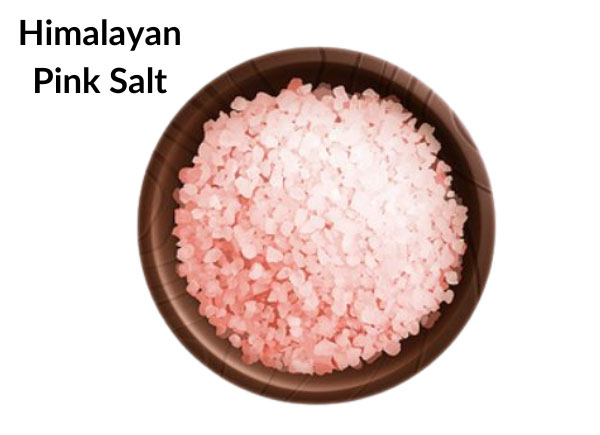Today I’m going to talk about a very important topic and that’s salt.
Why this essential mineral is so crucial to your existence, energy levels, mood, muscles, hormones, and brain health?
And this brings today’s main topic – comparing the pros and cons of sea salt, vs table salt vs Himalayan pink salt.
Most importantly, warnings about which form of salt you should avoid.
Thus, which is good or bad for your health.
Keep in mind that sodium is especially important for people who exercise regularly, get muscle cramps, have higher anxiety levels, feel tired, don’t sleep well, have joint pain, and are also concerned about wrinkles.
High Blood Pressure
And before I start, know that salt is not directly linked to high blood pressure.
Dehydration, plus high salt, combined with low water and high carbohydrate intake IS the real problem of high blood pressure.
Which is what most people’s diets are.
This is exactly what you get when you eat man-made, pre-packaged foods found in fast food restaurants and grocery stores.
However, some of the healthiest people on the planet live by the ocean, eating lots of seafood, which all contain sodium.
Having high blood pressure is linked to aging and that’s because of the decline in your youth hormones, plus weaker kidney function due to aging and also insulin resistance.
If you want a natural way to promote healthy blood pressure levels, I suggest you use Blood Pressure Optimizer, which is what my parents have been using for about 20 years.
Interesting Facts About Salt
But let’s start with some interesting facts about salt…
Your body is made up mostly of water, up to 70% or so, especially when you’re younger and have good hormones. As we age, the water content drops and this leads to dehydration, lower energy levels, wrinkles, smaller muscles, anxiety, and other health issues.
By the way, the water in your body is salt water.
Thus, drinking regular water all day long isn’t going to hydrate you the way salt water does.
In fact, when you go to the hospital and they give you an IV drip of saline, that’s salt water.
What’s also interesting is over 95% of the earth’s surface is covered in salt water.
I mention all of this because yes, water and salt are very important.
The more water you drink, the more salt you need to help absorb it.
I’m sure you’ve run into this problem when you drink a lot of water and you just seem to be peeing it all out minutes later.
This is because you’re not absorbing it well. Hormones are one reason – such as insulin, testosterone, estrogens, growth hormone, and so forth. But also a lack of electrolytes is another. Salt is the primary one.
So, let’s start with the comparisons.
Table Salt:
This is what’s normally found and is often used.
- Source: Usually mined from salt deposits in the earth and heavily processed to eliminate minerals.
- Composition: Primarily consists of sodium chloride. Often contains additives to prevent clumping, such as calcium silicate, and is sometimes iodized (iodine is added) to prevent iodine deficiency.
- Texture and Flavor: Fine-grained, highly refined, and has a strong salty flavor.
- Health Aspects: Its added iodine content is beneficial for the thyroid. However, the lack of additional minerals makes it less nutritionally diverse. It’s bleached, which is not good. It sometimes has anticaking agents such as aluminum, which can be toxic to the brain.
So, I would avoid regular table salt.
Sea Salt
People started using sea salt as a more “healthy” and alternative form of salt compared to table salt.
- Source: Produced through the evaporation of seawater, usually with little processing.
- Composition: Contains sodium chloride and trace minerals like potassium, iron, and zinc, which may add color and flavor. The exact mineral content can vary based on the water source.
- Texture and Flavor: Coarser and less refined than table salt. The flavor can be more complex due to the trace minerals.
- Health Aspects: The trace minerals offer some nutritional benefits. However, sea salt is not safe.
One major problem with sea salt is that it contains microplastics. The presence of microplastics in sea salt is a result of the increasing pollution of the world’s oceans.
Of course, these microplastics are bad for your health. It can cause inflammation and act as an endocrine disruptor in high dosages.
Unfortunately, several studies have detected up to 90% of microplastics in various brands of sea salt from different parts of the world.
So, like table salt, I would avoid sea salt as well, unless it’s Celtic Sea salt from France. That has not been shown to contain microplastics.
However, Celtic sea salt is a wet salt. It’s not dry like a table or sea salt. It’s a little damp. Which is fine to cook with, but hard to sprinkle on food.
Himalayan Pink Salt
- Source: Mined from the Khewra Salt Mine in Pakistan, believed to be millions of years old.
- Composition: Composed mainly of sodium chloride, but is known for its rich mineral content, including calcium, magnesium, potassium, copper, and iron, which give it a distinctive pink color.
- Texture and Flavor: Typically has a coarser texture than table salt and a more subtle flavor due to its mineral content.
- Health Aspects: Its mineral content can offer additional nutritional benefits.
So, if I had to pick one salt to consume, it would be Himalayan Pink Salt or Celtic Sea Salt.
As far as how much salt you need, I think between 1-2 teaspoons.
The more water you consume, the more you exercise and sweat, the more salt you can and should take.
And those on a very low carbohydrate diet or keto or carnivore diet should consume extra salt as well.
Keep an eye on all the packaged foods and condiments you each which have lots of hidden salts, which is the main problem.
And if you want healthy blood pressure levels, make sure you take a look at Blood Pressure Optimizer.
- https://www.ncbi.nlm.nih.gov/pubmed/4342096
- https://www.ncbi.nlm.nih.gov/pubmed/18204443
- https://www.ncbi.nlm.nih.gov/pubmed/7778872
- https://www.ncbi.nlm.nih.gov/pubmed/27449852
